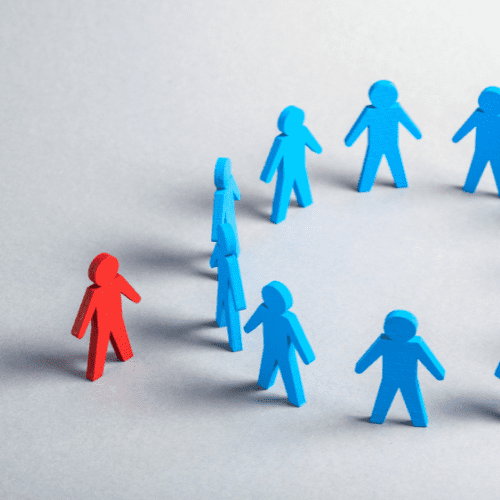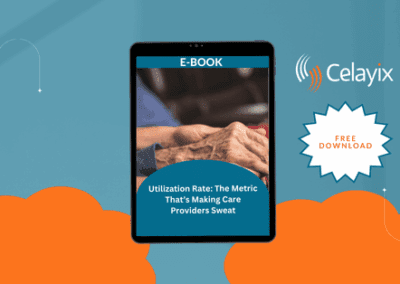“It is not our differences that divide us. It is our inability to recognize, accept, and celebrate those differences.”
– Audre Lorde.
This American writer and poet is best known for her poems expressing her anger and outrage at civil and social injustices she observed throughout her life. Lorde was born in New York City as a black woman. Also, being a lesbian, she dedicated her life to confronting one of the greatest fears in human society: discrimination. Unfortunately, this is an issue that affects workplaces across the world.
What is Discrimination?

Discrimination occurs when a person is denied the opportunity to exercise their human or other legal rights equal with others. It generally occurs due to an arbitrary distinction in policy, legislation, or treatment. Discrimination strikes the core of what it means to be human.
Throughout history, we have taken several actions to tackle the issue of Discrimination; however, unless human society recognizes, accepts and celebrates the differences in our community, solving this issue is impossible.
What is Discrimination in the workplace?
Discrimination in the workplace occurs when an individual or a group is treated unfairly or unequally based on their traits. Protected attributes include race, ethnicity, gender identity, age, disability, sexual orientation, religious views, and national origin. Discrimination can occur between coworkers, job candidates, or employees and their employers in the workplace. Regardless of whether it is on purpose or by mistake, discrimination is illegal .
The employee engagement platform Ten Spot conducted a study on the issue. 70% of the respondents have experienced workplace discrimination or harassment at least once. These bad experiences might be affecting the 61% of Gen-Z employees who feel their firm would be more engaged and productive if it were actively involved in addressing today’s significant societal concerns. Nonetheless, the issue is far beyond these numbers; discrimination in the workplace is far more common than society realizes. The actions currently taken to eradicate discrimination are just not enough. Discrimination is a challenging topic to discuss in the workplace. However, the importance of tackling it before the issue amplifies is critical for HR and the company.
How can you tackle Discrimination in the workplace?
70% of respondents have experienced workplace discrimination or harassment at least once.
Ten Spot
It may seem difficult or even unrealistic to completely eradicate discrimination in the workplace in the blink of an eye. However, it’s important to identify small steps that a company can and should take to approach discrimination in their workplace. Yes, legislations are critical in sanctioning discrimination. But, there’s always more a company can do to reduce discrimination and help employees who have been victims.
Being Silent is not an option.
This is a watershed moment not merely in the workplace but also for the entire planet. The first step to tackling discrimination in the workplace is to acknowledge the current inequities and proclaim your commitment as an employer to making things better. Employers may help by starting productive and courteous conversations, developing employee resource groups, providing training on avoiding harassment and Discrimination, and providing ways for employees to speak up about racial issues.
The same thing goes for the employees; silence is not an option. Discrimination in any form is wrong and has no place in the workplace. If you encounter it, speak up and defend yourself as soon as possible. This way, you can minimize the impact and increase awareness. This will prevent others from suffering through the same ordeal. Remember, you should report any behaviour that causes you to feel uneasy. If a coworker makes an improper remark, telling them you don’t like it can halt them in their tracks and make them think twice about their future behaviour. Lastly, don’t be a bystander. Anyone who witnesses inappropriate behaviour or ‘banter,’ should report it. It doesn’t matter if it impacts them, a colleague, or a stranger. Make sure your coworkers are aware that it is never acceptable.
Be proactive

When it comes to eliminating workplace prejudice, employers and managers have the most significant responsibility. Employers often avoid discussing equality and discrimination issues, but the consequences of doing so can be costly – both financially and in terms of reputation. Employers may do a lot to help their employees and stop the behaviour. As role models, senior leaders play a vital role. Training employees on diversity and inclusion isn’t always enough; it also requires strong messages and support from the top. One way to do this is by embedding Anti-Discrimination into your Values, Training And Actions.
A solid set of fundamental values interwoven into every policy, decision, and process are critical to creating a more robust, healthier, and better workplace culture. Now is the moment to call out any ineffective rules, attitudes, partnerships, or customer connections that are at odds with your company’s principles. You don’t have to witness discrimination in the workplace to prevent it. Stop it before it even has the change to happen.
Make it Genuine
Do not use anti-discrimination training to tick a box; instead, it should educate and motivate people to make constructive changes. To change people’s minds, training alone isn’t enough. Because of implicit prejudice, we see discrimination in people’s attitudes, cultural messages, stereotypes, and beliefs. Training and implementing systems, rules, and expectations that assist establish a culture founded in diversity and inclusion may all help companies actively eliminate bias.
Finally, management must demonstrate their commitment to diversity and the value it adds to the firm and keep others accountable. They must also openly express their position on Discrimination, including what will and will not be accepted and the repercussions for violating it. Regardless of someone’s level or title, discrimination in any form should never be disregarded, excused, or allowed.
You don’t have to do this alone.
“Individually, we are one drop. Together we’re an ocean” – Ryunosuke Satoro.
Neither employees nor employers who have faced or witnessed discrimination are required to fight this alone. The workplace doesn’t necessarily have to constitute a place just for professional matters and relationships. The majority of people are oblivious of racial injustice and the unintentional comments against their BIPOC (Black, Indigenous, and People of Color) coworkers. Employers, as a result, should try raising awareness by providing resources to educate employees about the culture of Discrimination and the history of different kinds of Discrimination, in addition to having talks.
Victims of prejudice frequently keep silent, because of fear of reprisal or misjudgement. This is where management fails because they either turn a blind eye to discriminatory statements or downplay the seriousness of the words or actions. Companies must hold themselves accountable for their values and raise awareness about social concerns by using their platforms to advocate for the cause.
Hence, if you are a victim of Discrimination, experts advise seeking help as soon as possible. It might be from your HR department, a lawyer, a trade union, a trusted coworker, family, or friends, but make sure you speak to someone.
Take Action by Cultivating Diversity And Tackling Unconscious Bias
Until you tackle the problem correctly, it is unlikely that you will reduce discrimination in your workplace. As mentioned previously, people are often oblivious to it, until somebody takes action. Consequently, the course of action you follow will be determined by your circumstances and the goals you want to attain.
Employers may address Discrimination in various ways, including the employment process. Whether intentionally or unintentionally, leaders are the ones who shape the business culture. Leaders must stand up and actively assist anti-discrimination to take serious action against it. Without action, it is meaningless to talk about diversity and inclusion measures.
Because they fail to identify the shortcomings in their own internal business culture, many companies unknowingly propagate Discrimination in the workplace. Using a third party to address unconscious bias, accepting criticism from coworkers, and taking an honest look at one’s culture can all assist in reducing the barriers that hinder the culture from flourishing.
Flaws in the System

In an article published by Harvard Business School, minority job seekers are eliminating references to their race from their resumes in the hopes of improving their chances of landing a job. According to the report, “Asian candidates frequently modify their foreign-sounding names to something more American-sounding” and “Americanize their hobbies by employing typical white western cultural activities like skiing or hiking.” Furthermore, by eliminating the word “black” from a professional society or scholarship, African Americans reduce their engagement in black groups. Fortunately, companies now have the chance to identify their unconscious prejudice and prioritize diversity in the workplace. Adding blind hiring to the recruiting process is one method to do this.
Regardless of race, ethnicity, country, class, caste, religion, belief, sex, gender, language, sexual orientation, gender identity, sex characteristics, age, health, or another status, we all have the right to be treated equally. Whether in our workplace, home or anywhere in public, discrimination needs to be tackled proactively and immediately.




